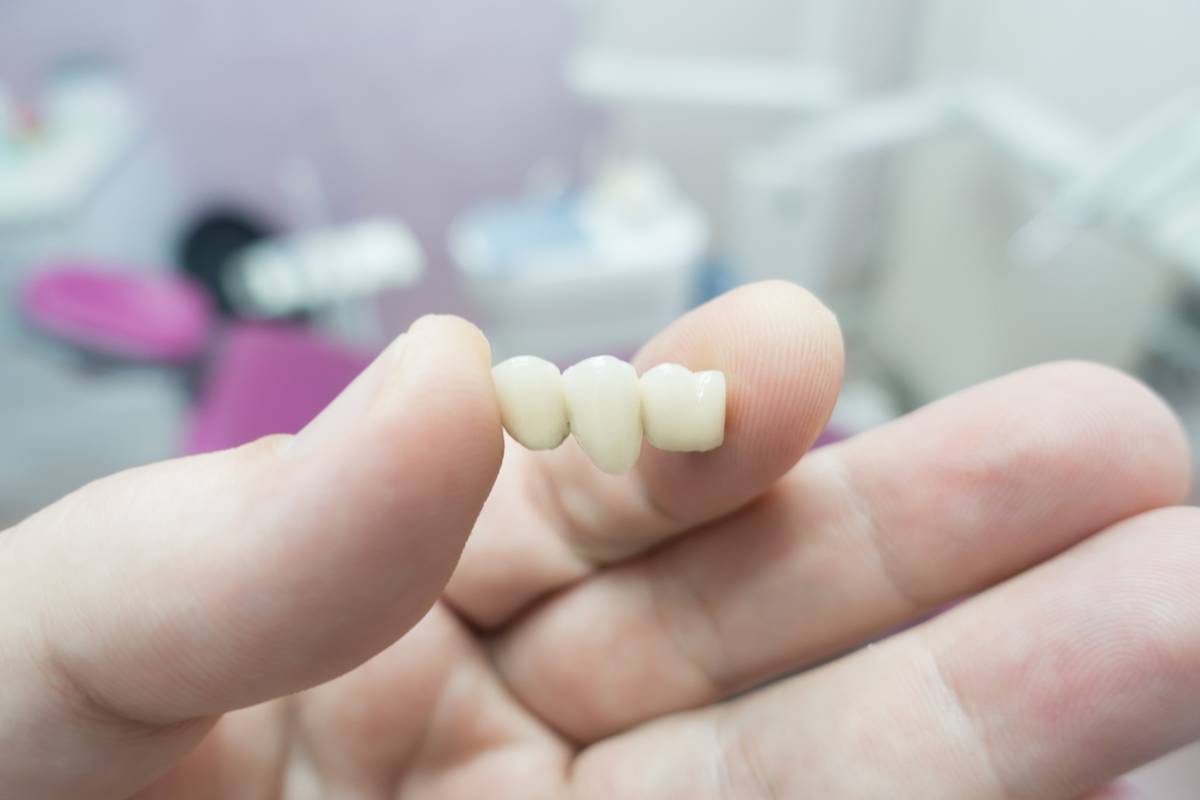If you are missing one or more teeth in a row, a same-day dental bridge might be the right solution for you. But what are the different types of dental bridges, and what type is the most suitable for your case? Please read our article to learn more about dental bridges.
What Is a Dental Bridge?
A dental bridge is a method of tooth replacement for one or several teeth in a row. This dental restoration bridges the gap with artificial teeth that are matched to the color and shade of your natural teeth.
A dental bridge typically consists of two parts: abutments that support the bridge and pontics, or artificial teeth, that bridge the gap. Abutments can refer to a patient’s natural teeth on both sides of the gap or to metal posts that are used in implant-supported bridges. Depending on the gap that needs to be bridged and on the condition of the surrounding teeth, a dental bridge can consist of more than one abutment and pontics.
What Are the Different Types of Dental Bridges?
Traditional Dental Bridge
A traditional dental bridge is usually used when a patient has strong teeth on both sides of the gap to support the bridge. In this case, dental crowns are placed on the natural teeth, and the pontics (artificial teeth) fill the gap between them. Traditional dental bridges tend to be secure and stable.
Cantilever Dental Bridge
A cantilever dental bridge uses a tooth on only one side of the gap to support it. Thus, the pontics (artificial teeth) extend and hang across the gap. This method mostly works when only one natural tooth remains available to support the bridge. A cantilever dental bridge has support by one tooth instead of two. So it tends to prove less secure compared to a traditional bridge.
Maryland Dental Bridge
Maryland bridges are most commonly used to replace front teeth, as these bridges are not strong enough for chewing food. This type of bridge consists of metal wings bonded to the backs of the teeth surrounding the gap and an artificial tooth to fill the gap.
Implant-supported Dental Bridge
This type of dental bridge has support by metal posts. We place these in the jaw bone and imitate natural tooth roots. Implant-supported bridges typically help when a patient has three or more missing teeth in a row. The placement of an implant-supported bridge usually takes two steps. First, we surgically place the implant in the jawbone. Then, after it fully fuses with the bone, which might take 3 to 6 months, the bridge is installed.
What Type of a Dental Bridge Is Right for Me?
Only your dentist can accurately determine what type of dental bridge will suit your dental needs the best. The choice might depend on several factors, such as:
- Age of a client
- The number of teeth missing
- The size of the gap
- The availability and condition of the natural teeth used to support the bridge
- The health of a patient’s teeth and gums
- The general health of the patient and the capacity of the jawbone to heal in case of a dental implant placement
Pros and Cons of Dental Bridges
Dental bridges have such benefits as:
- Dental bridges look natural in the mouth and can end up matched in color, shade, and shape to your natural teeth.
- Dental bridges restore speech and food chewing function. Proper food chewing is crucial for nutrition and digestion.
- Dental bridges prevent the movement of the natural teeth surrounding the gap, which can start shifting into the gap and disrupt the look of the smile.
Potential drawbacks of dental bridges might include:
- Dental bridge security can be jeopardized if the abutment teeth are decayed or damaged.
- If the abutment teeth are not strong enough to support the bridge, they risk fracture.
- Having a dental bridge requires a thorough dental hygiene routine. If the bridge and the gum tissue underneath it are not
- properly cleaned, plaque and bacteria can collect there and cause gum disease and tooth decay.
Make an Appointment Today
If you need to replace missing teeth, do not hesitate to make an appointment at our office today to get high-quality dental bridges in Upland. Our dentist will carefully evaluate your dental needs and goals and offer the best solution for you. We are looking forward to welcoming you to our dental office.

